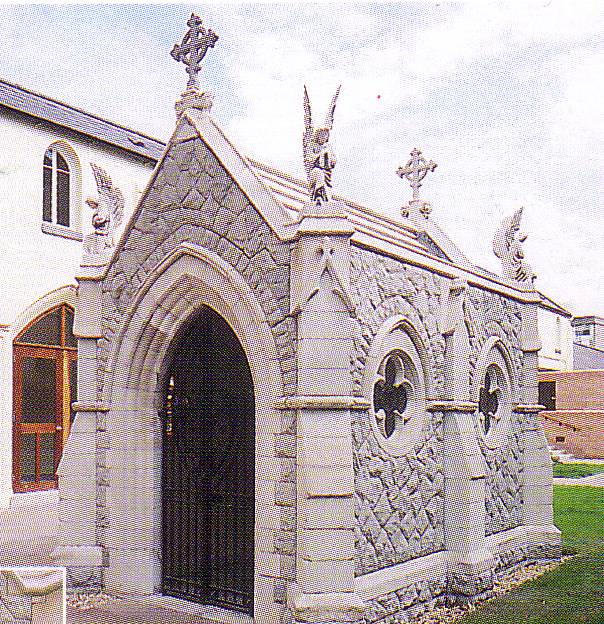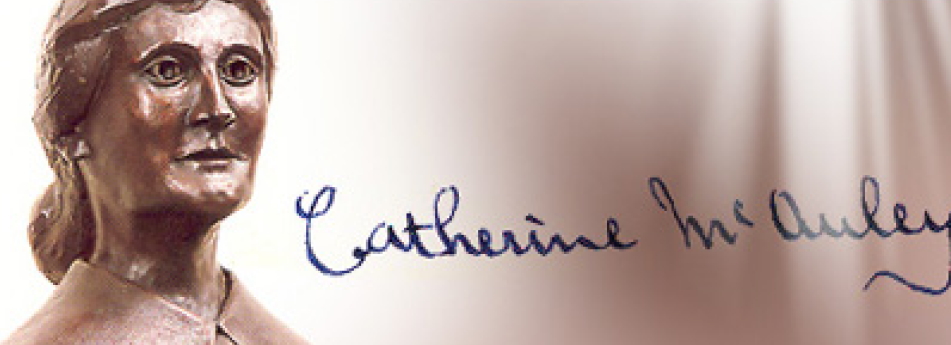Venerable Catherine McAuley, Foundress of the Sisters of Mercy, was born on 29 September 1778 at Stormanston House, Dublin. Her father’s compassion for the poor set an example for Catherine. He died when she was only five. Elinor McAuley, Catherine’s mother, was not a good manager and the family became very poor. On her mother’s death Catherine, with her brother and sister, went to live with the Armstrongs. In this Protestant household Mary and James McAuley soon gave up the practice of their faith, but Catherine remained faithful to her beliefs. In 1803 Catherine went to live with Mr and Mrs Callaghan, Quaker friends of the Armstrongs. The Callaghans were wealthy and while they were happy to provide financial support for Catherine’s charitable works, they did not approve of her Catholicity. Catherine spent twenty years with the Callaghans at Coolock House where she gave catechetical instructions to the household servants and the poor village children.
As Mrs Callaghan’s health deteriorated, Catherine assumed responsibility for running Coolock House. She cared for Mrs Callaghan with great love and devotion, reading Scripture to her for many hours. Inspired by Catherine’s goodness Mrs Callaghan, on her deathbed, was baptised a Catholic. The death of those she loved was a constant source of pain for Catherine. Mr Callaghan appointed Catherine his sole legatee, knowing that she would use the inheritance to provide ‘protection and education for young servant girls.’ William’s generosity enabled Catherine to do what she wanted for those in need, particularly women and children.
The House in Baggot Street
In 1824, Catherine purchased land on Baggot Street, Dublin, and began to build what became the House of Mercy. Catherine’s family did not approve of the building and her brother James christened it ‘Kitty’s Folly.’ Catherine’s concern for the marginalised was equalled by her wisdom and she wished to make the wealthy aware of the plight of the poor.
The house on Baggot Street was ready for use on 24 September 1827. It seemed appropriate to place her work under the patronage of the Mother of Mercy. The House of Mercy flourished, hundreds of girls enrolled in the school and it became a home for young servant girls. The visitation of the sick was added to the activities. A group of twelve women lived at Baggot Street in these early years. As time passed they adopted a common timetable and began to dress simply and similarly. They called each other ‘sister.’
.jpg) The idea of establishing a religious Congregation did not appeal to Catherine, but, once she was assured that she and her companions could continue with their charitable work, she agreed. On 8 September 1830, Catherine with her two companions – Mary Anne Doyle and Elizabeth Harley – went to the Presentation Convent, George’s Hill, to begin their novitiate. Catherine was 52 years of age. Fifteen months later, on 12 December, 1831, the three women professed their Vows and the Institute of the Sisters of Mercy was born in Dublin. Catherine’s dream had become a reality for her.
The idea of establishing a religious Congregation did not appeal to Catherine, but, once she was assured that she and her companions could continue with their charitable work, she agreed. On 8 September 1830, Catherine with her two companions – Mary Anne Doyle and Elizabeth Harley – went to the Presentation Convent, George’s Hill, to begin their novitiate. Catherine was 52 years of age. Fifteen months later, on 12 December, 1831, the three women professed their Vows and the Institute of the Sisters of Mercy was born in Dublin. Catherine’s dream had become a reality for her.
In the ten years between the establishment of the Order and her death Catherine founded fourteen Convents of Mercy in Ireland and England. Wherever she founded a new community, she held public Profession ceremonies so that the townspeople might understand something of the spirit of the Sisters and encourage other young women to join the community. Whenever there was an urgent request made for help Catherine responded to it. Catherine linked each new foundation to herself and each other by frequent visits and letters. She used to send what she called ‘Foundation Circulars’ where she gave news of the Congregation, offered or sought advice, created verses to amuse or soften a correction and shared her joys and disappointments.
Catherine’s Spirituality
Catherine was a deeply prayerful woman and she placed the success of the Institute in God’s hands. Her love of and fidelity to God were reflected in her manner, which was always considerate and warm.
By 1841 Catherine’s ceaseless activity was gradually taking its toll on her health. She wrote of ‘having a cough’ when she returned from Birmingham to Baggot Street in September 1841 and she quietly began to put her affairs in order.
Catherine McAuley died on 11 November 1841 and in accordance with her wish, she was buried in the grounds of the Convent in a ceremony that was customary for the poor. Her family, friends and community grieved her loss but rejoiced that she had at last gone home to the God she had loved and served with all her heart.






